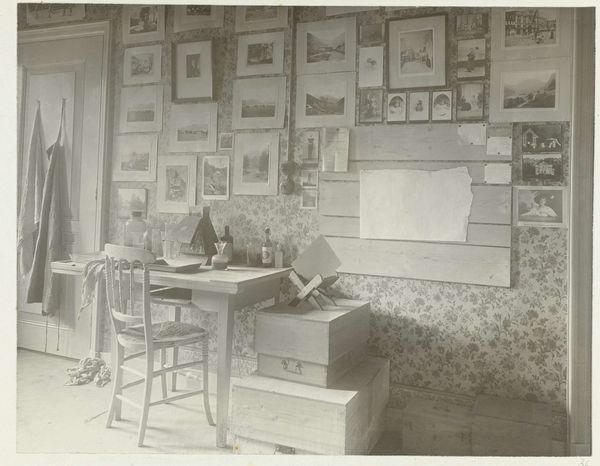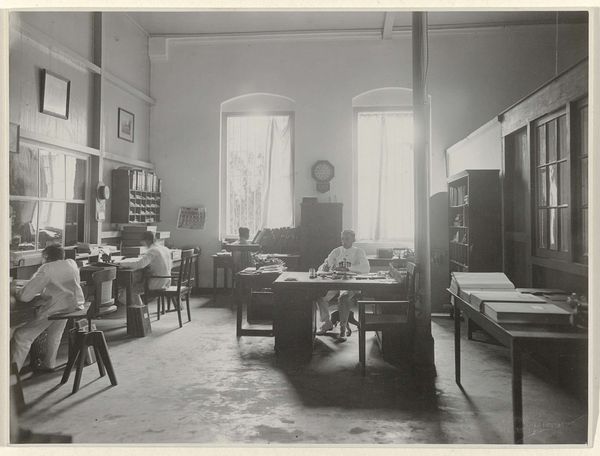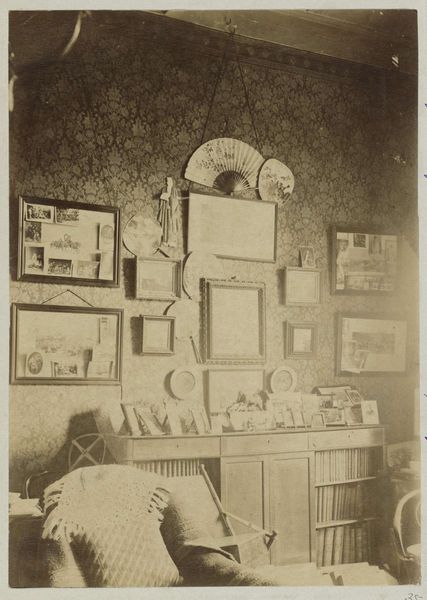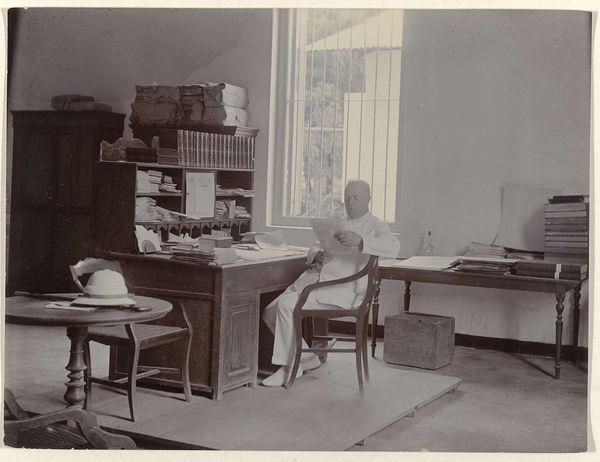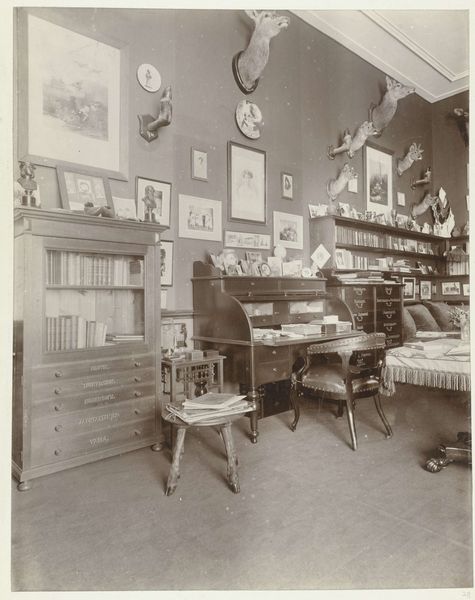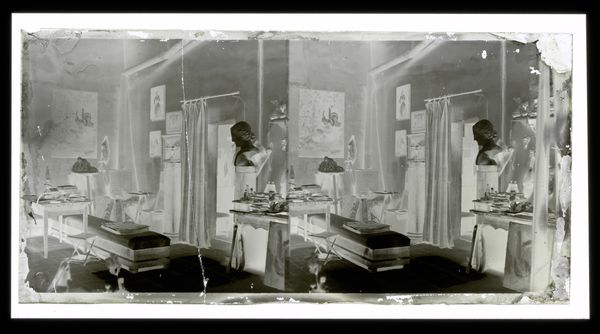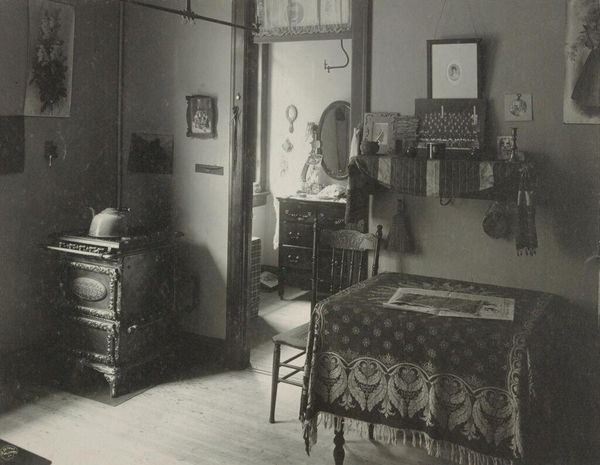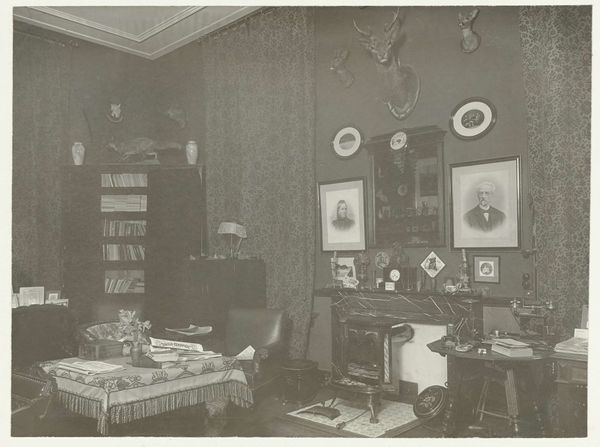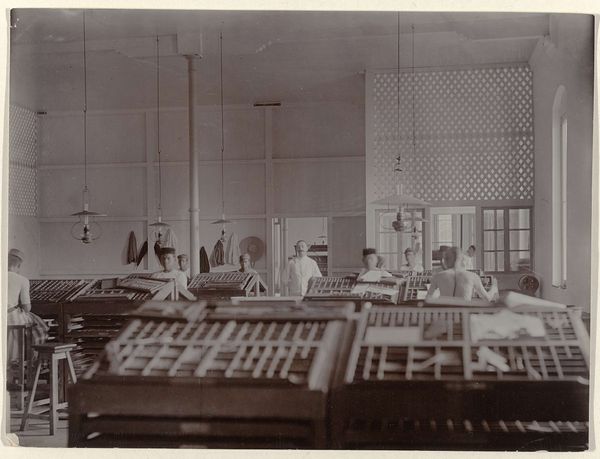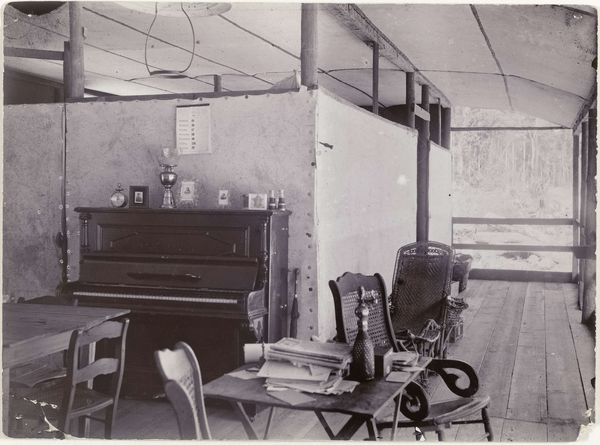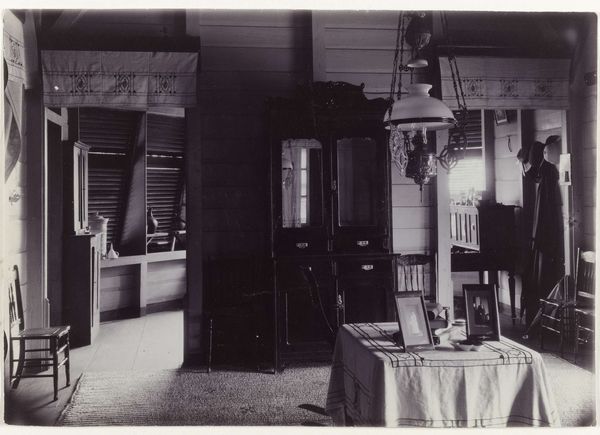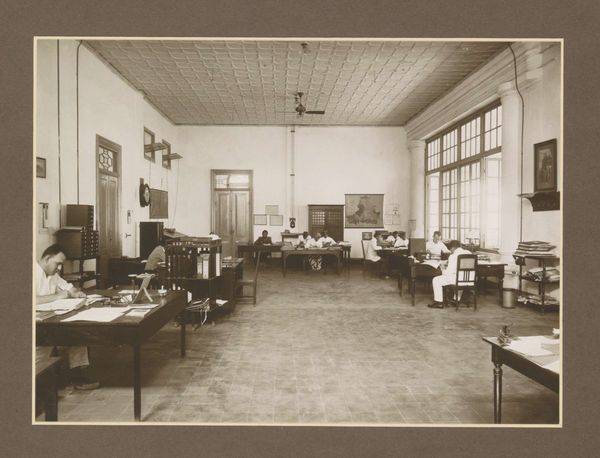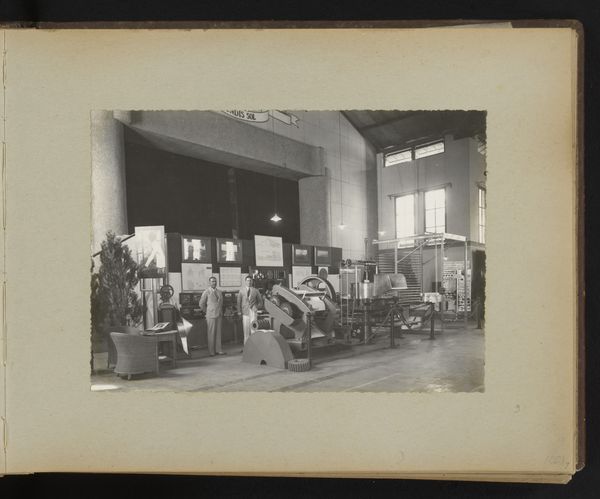
The Photographer's Workroom, from the album 'De Wildbaan' 1903 - 1907
0:00
0:00
photography, gelatin-silver-print
#
portrait
#
still-life-photography
#
film photography
#
pictorialism
#
photography
#
gelatin-silver-print
#
modernism
Dimensions: height 335 mm, width 520 mm, height 170 mm, width 223 mm
Copyright: Rijks Museum: Open Domain
Curator: What an intriguing interior. The gelatin-silver print we’re looking at is titled *The Photographer's Workroom* from the album 'De Wildbaan,' attributed to Henry Pauw van Wieldrecht and created between 1903 and 1907. Editor: My first impression is one of quiet intensity. The muted tones, the orderly arrangement of objects… it feels like a space pregnant with potential, ready to capture a fleeting moment and transform it into something enduring. Curator: Indeed. Notice how van Wieldrecht uses the camera itself as a focal point. It’s not just a tool, but an almost totemic object, presiding over the room, suggesting the sacred act of image-making. The shelves of various liquids and glass vials could allude to alchemy. The transformation from light to silver. Editor: The composition, too, is remarkable. The grid-like pattern of the pictures on the wall contrasted against the solid form of the camera itself. It speaks to the tension between spontaneity and control inherent in photography. Pictorialism embraced that blending of fine art and documentation, and it does it beautifully. Curator: Precisely. The images hanging behind hint at other landscapes and lives captured. Their careful arrangement signifies more than casual display; rather they signal how personal memory intersects with this workspace. This connects the artistic practice of photography to that of storytelling. Editor: There is an emotional quality as well. The way light subtly outlines each form evokes a feeling of nostalgia, almost like looking at a faded memory. What would you say that nostalgia represents? Curator: Perhaps for an earlier time, when the act of photographing involved deliberate engagement with materials and subject. Before images became disposable, instantaneous, even invisible, stored in digital space rather than a tangible print. Van Wieldrecht turns the functional workroom into a kind of symbolic stage. Editor: I see it more as a rumination on photographic structure, emphasizing form, texture, and light through this collection of materials. But also there is indeed a quiet dignity and grace in the process of early photography which clearly translates from this workroom and photographic method. Curator: That close formal attention allows us to read the photograph itself as a symbol, reflecting changing cultural values around photography at the turn of the century. The work embodies transition and continuity. Editor: Absolutely, and appreciating it together sheds even more light on its quiet, lasting power.
Comments
No comments
Be the first to comment and join the conversation on the ultimate creative platform.
